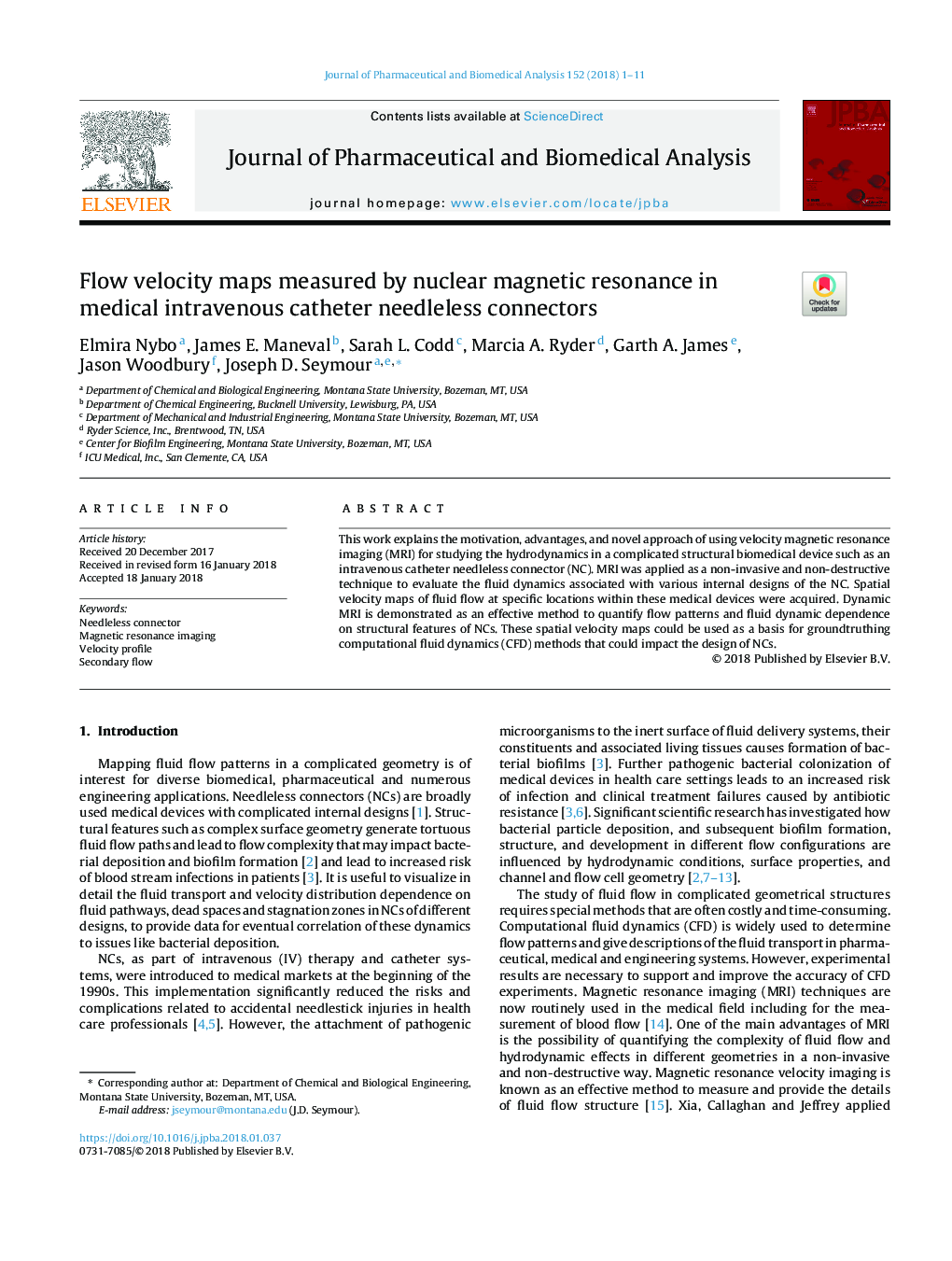| Article ID | Journal | Published Year | Pages | File Type |
|---|---|---|---|---|
| 7627061 | Journal of Pharmaceutical and Biomedical Analysis | 2018 | 11 Pages |
Abstract
This work explains the motivation, advantages, and novel approach of using velocity magnetic resonance imaging (MRI) for studying the hydrodynamics in a complicated structural biomedical device such as an intravenous catheter needleless connector (NC). MRI was applied as a non-invasive and non-destructive technique to evaluate the fluid dynamics associated with various internal designs of the NC. Spatial velocity maps of fluid flow at specific locations within these medical devices were acquired. Dynamic MRI is demonstrated as an effective method to quantify flow patterns and fluid dynamic dependence on structural features of NCs. These spatial velocity maps could be used as a basis for groundtruthing computational fluid dynamics (CFD) methods that could impact the design of NCs.
Related Topics
Physical Sciences and Engineering
Chemistry
Analytical Chemistry
Authors
Elmira Nybo, James E. Maneval, Sarah L. Codd, Marcia A. Ryder, Garth A. James, Jason Woodbury, Joseph D. Seymour,
